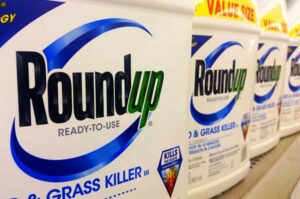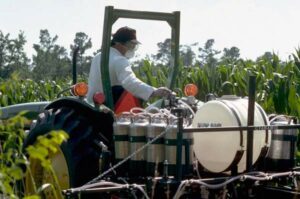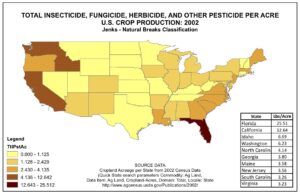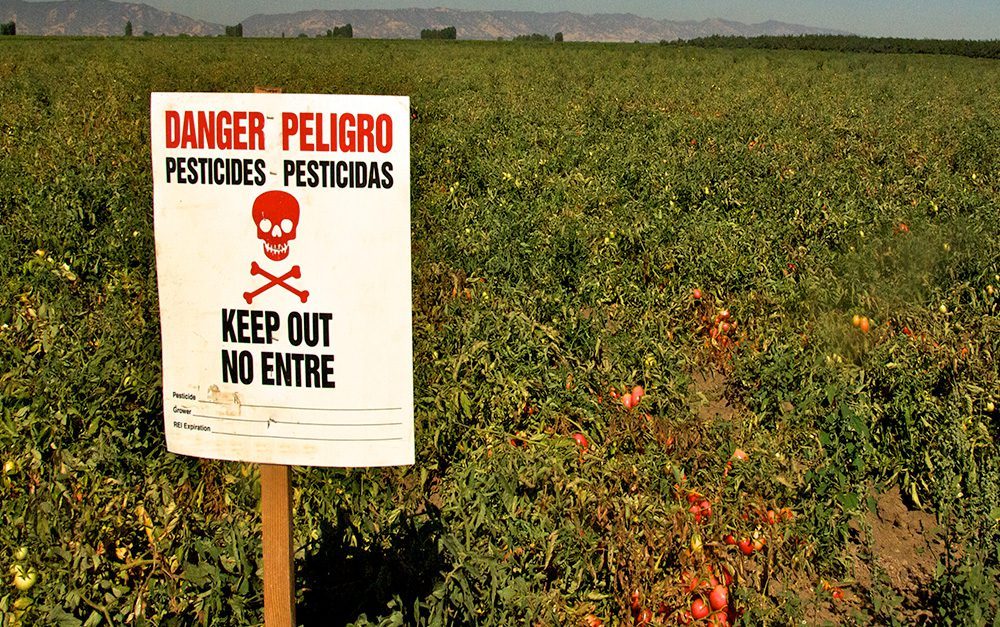All too often, these chemicals are allowed onto the market before their impacts are fully understood — and harms to our health and the environment are discovered years later. The science is increasingly clear that even low levels of exposure can harm human health, and children are particularly vulnerable.
Our national rules governing pesticide use are surprisingly weak. Yet as public concern continues to grow, alternative approaches to managing pests are increasingly available and gaining ground in homes, schools and agricultural fields across the country.
Below is a brief, Pesticides 101, overview of the problem; explore our campaigns to find out more about how PAN and our partners are building a healthy, thriving system of food and farming — and how you can help.
What are pesticides?
 Insecticides (bug killers), herbicides (weed killers), and fungicides (fungus killers) are all pesticides; so are rodenticides and antimicrobials. Pesticides come in spray cans and crop dusters, in household cleaners, hand soaps and swimming pools.
Insecticides (bug killers), herbicides (weed killers), and fungicides (fungus killers) are all pesticides; so are rodenticides and antimicrobials. Pesticides come in spray cans and crop dusters, in household cleaners, hand soaps and swimming pools.
Insecticides are generally the most acutely (immediately) toxic. Many are designed to attack an insect’s brain and nervous system, which can mean they have neurotoxic effects in humans as well. Herbicides are more widely used (RoundUp and atrazine are the two most used pesticides in the world) and present chronic risks. This means ongoing, low-level exposures can increase the risk of diseases or disorders such as cancer, Parkinson’s disease or infertility and other reproductive harms. Fungicides are also used in large amounts; some are more benign, some are not.
Pesticides are also sometimes broken down into chemical classes and modes of action. For example, fumigants are pesticides applied as gases to “sterilize” soil, and systemics work their way through a plant’s tissue after being taken up at the root. Major chemical classes include: carbamates, organochlorines, organophosphates (mostly developed 70 or more years ago for chemical warfare) and triazines. Newer classes include pyrethroids and neonicotinoids, synthesized to mimic nature’s pest protection. For more details on specific pesticides, visit our online database at www.pesticideinfo.org.
What is the “pesticide treadmill?”
 Also referred to as the “pesticide trap,” farmers get caught on the treadmill as they are forced to use more and more — and increasingly toxic — chemicals to control insects and weeds that develop resistance to pesticides.
Also referred to as the “pesticide trap,” farmers get caught on the treadmill as they are forced to use more and more — and increasingly toxic — chemicals to control insects and weeds that develop resistance to pesticides.
As “superbugs” and “superweeds” develop in response to widespread and continous use of chemicals, a farmer will spend more on pesticides each year just to keep crop losses at a standard rate.
The recent introduction of crops genetically engineered for use with the herbicide 2,4-D provides a clear example of the pesticide treadmill. Widespread planting of RoundUp Ready crops and the associated application of RoundUp prompted weeds to develop resistance to the product. Resistant strains of “Pigweed” for instance, reportedly now grow with such vigor in southern cotton fields that the weeds can “stop a combine in its tracks.” Farmers are forced to return to use of 2,4-D — an antiquated, drift-prone chemical clearly linked to cancer and reproductive harms.
Overall, pesticide resistance is increasing. In the 1940s, U.S. farmers lost seven percent of their crops to pests. Since the 1980s, loss has increased to 13 percent, even though more pesticides are being used. Between 500 and 1,000 insect and weed species have developed pesticide resistance since 1945.
Rachel Carson clearly predicted the treadmill phenomenon in her 1962 book Silent Spring.
There is another way. Agroecology is the science behind sustainable farming. This powerful approach combines scientific inquiry with place-based knowledge and experimentation, emphasizing approaches that are knowledge-intensive, low cost, ecologically sound and practical. Home use of pesticides — which on a per acre basis outpaces use on farms by a ratio of 10 to 1 — puts families across the North America at unnecessary risk. Alternatives are available to manage home, lawn and garden pests without toxic pesticides.
Which rules govern pesticides?
 In the U.S., the Environmental Protection Agency (EPA) has primary authority to register and regulate pesticides. The agency’s oversight of pesticides is authorized by the following federal laws:
In the U.S., the Environmental Protection Agency (EPA) has primary authority to register and regulate pesticides. The agency’s oversight of pesticides is authorized by the following federal laws:
The Federal Insecticide, Fungicide, and Rodenticide Act allows EPA to register pesticides using risk/benefit standards (how much risk is balanced by how much benefit);
The Federal Food, Drug, and Cosmetic Act aims to increase protection for children and infants, including setting tolerances (maximum residues on food);
The Food Quality Protection Act of 1996 (FQPA) amends previous laws by establishing a single safety standard for tolerances to increase protection of children from aggregate exposures (dietary, water and residential); and
The Endangered Species Act of 1973 which requires that pesticides that will harm these species will not be registered.
Some states have additional, stricter rules restricting pesticide use, and in a handful of states, local cities and counties can put even stricter rules in place.
Internationally, pesticides are regulated through two treaties that PAN played a formative role in creating:
- Stockholm Convention on Persistent Organic Pollutants (POPs treaty) addresses toxins that persist, move around the world on wind and water, and bioaccumulate (DDT, for example)and
- Rotterdam Convention on Prior Informed Consent (PIC treaty) gives countries the right to refuse the import of highly hazardous toxins.
The PIC treaty attempts to redress the dumping of obsolete or banned pesticides on the developing world. While only 25 percent of global pesticide use takes place in developing countries, 99 percent of acute pesticide-related fatalities occur there.
Exposure & impacts
 Pesticide exposure depends on where you live and what you do.
Pesticide exposure depends on where you live and what you do.
Each year, an estimated one billion pounds of pesticides are applied to U.S. farms, forests, lawns and golf courses. More than 17,000 pesticide products are currently on the market — with many of them approved through “conditional registration,” a regulatory loophole that allows products on the market quickly without thorough review.
Pesticide applicators, farmers and farmworkers, and communities near farms are often most at risk, but studies by the Centers for Disease Control show that all of us carry pesticides in our bodies. Golf courses use pesticides heavily, as do some schools and parks. Consumers also face pesticide exposure through food and water residues. For instance, the herbicide atrazine is found in 94% of U.S. drinking water tested by the USDA.
This widespread, long term use of pesticides has had tremendous ecological impacts over the years, from pest and weed resistance to environmental contamination and honey bee declines.
In terms of human health, pesticides are now linked to a range of health impacts, including increased risk of cancer, Parkinson’s disease and neurodevelopmental effects like autism and ADHD. As we highlight in our A Generation in Jeopardy report, the science shows that infants and children are most at risk
Photo: Justified Sinner | Flickr
Photo: Mike Mozart | Flickr







